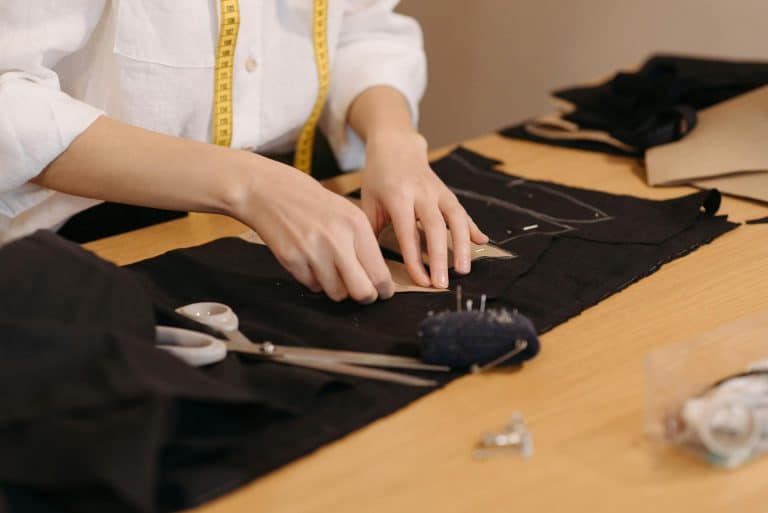Every collection begins with a spark of inspiration, but it only becomes clothing once someone translates that vision into a repeatable, sew‑ready plan. That “someone” is a pattern maker. For early‑stage fashion brands, the pattern maker is often the quiet force that turns sketches into first samples, controls production costs, and protects a label’s reputation for fit. Skimp on this step and even the most creative concept can unravel.
Below are five key roles pattern makers play for startups—plus why partnering with an expert can save time, money, and many headaches down the line.
1. Turning Ideas into Technical Blueprints
Design drawings speak the language of style; factories read engineering. A pattern maker bridges the gap by drafting life‑size templates for every garment piece—front bodice, back yoke, sleeve, facing, and so on. These templates include seam allowances, notches, grainlines, and construction notes. In essence, the pattern is the garment’s blueprint.
For small labels that rely on freelance sewing rooms, clarity matters. A well‑marked pattern cuts sampling errors in half, which is critical when you can only afford one or two rounds before market week. Resources like Tegmade’s pattern maker Los Angeles directory show how local experts combine CAD tools with hands‑on draping to speed up this translation process.
2. Balancing Aesthetic Vision with Practical Reality
Young brands often sketch necklines impossible to finish, or trousers whose pockets collide with zippers. A seasoned pattern maker spots these red flags before fabric is cut. They suggest minor tweaks—raising a cut‑out by 2 cm for bra coverage, adding ease to a sleeve head—so the garment remains true to the designer’s mood board but survives real‑world wear.
The Council of Fashion Designers of America notes that 60 % of product delays stem from fit or construction issues uncovered after sampling (CFDA Manufacturing Report, 2023). Involving a pattern maker at concept stage prevents such detours, letting startups launch on schedule and on budget.
3. Accelerating Sampling and Trimming Development Costs
Pattern makers think in nested efficiencies.
- Sample count: A clean first pattern often means only one muslin and one final proto. Each avoided extra sample can save upward of $250 in materials, shipping, and labor.
- Marker optimization: When the maker also creates the cutting marker, they position pattern pieces like a jigsaw to squeeze more units from each yard. Even a 2 % fabric saving compounds fast when minimums hit triple digits.
Hugo Boss reported that switching to 3D pattern software trimmed its average development cycle by two weeks and cut sampling costs by 30 %—a figure shared in a recent Business of Fashion technology briefing. While a startup’s scale is smaller, the proportional gains can be even larger because every dollar saved extends runway.
4. Guarding Consistent Fit Across Sizes
One five‑star review—or one scathing return—can shape a new label’s fate. Consistency of fit is key. After grading the base size into additional sizes, the pattern maker verifies that the proportion and style lines hold true. Poor grading can create pulling at the bust in larger sizes or sagging waistlines in petites, eroding brand trust overnight.
Modern makers blend body‑scan data with decades of draping skills to grade patterns in quarter‑inch increments. Brands like Universal Standard credit this rigorous grading approach for their low return rates and loyal repeat customer base (Vogue Business, 2024). Startups that invest early in expert grading position themselves to scale without constant fit crises.
5. Laying the Groundwork for Sustainable Growth
Investors and retailers look for operational discipline as much as design flair. When a startup can show factory‑ready patterns, graded nests, and yield‑optimized markers, it signals a mature supply‑chain mindset. This readiness reduces onboarding risk for new manufacturing partners and makes it easier to hit margin targets once order volumes climb.
A pattern maker also archives every revision, providing a technical “source of truth.” If production shifts from a domestic sample room to an overseas factory, these detailed specifications ensure the 1,000th unit looks and feels like the first. Brands that lack this documentation often face costly remake orders or discount stock write‑offs.
Conclusion
Fashion is a race against time, cash flow, and consumer expectations. Pattern makers give startups a fighting chance by converting creative energy into precise, repeatable instructions that factories can follow. They foresee fit flaws, shorten sampling rounds, and protect profit margins—functions no size chart template or quick YouTube tutorial can replace.
Whether you tap a freelance expert, an in‑house technician, or a specialized studio such as the pattern maker Los Angeles community, view the cost as an investment, not an overhead. With a solid pattern under every garment, a young brand can focus on marketing, story‑telling, and building demand, confident that each box leaving the warehouse will meet the promise on its hangtag.













